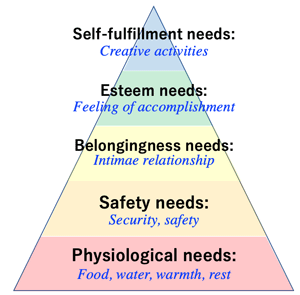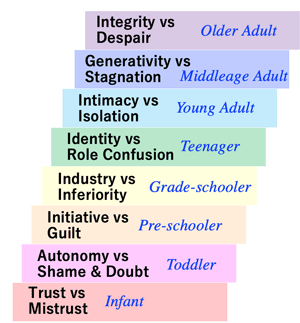>Top 3. Overview and Relevance:
- Nudge theory initially emerged in the early 2000s USA as a radical approach to influencing people's interaction with financial systems, notably pensions, savings and healthcare - so as to improve quality of later life, (not to enrich financial corporations).
This last point is significant - Nudge was initially developed as an ethical concept, by academics, for the improvement of society, not as a mechanism for commercial exploitation, or government manipulation.
From these beginnings, the Nudge concept now offers vastly bigger implications and applications.
- Nudge principles and techniques are now increasingly significant in communications, marketing, and the motivation of groups: in business, marketing, selling, organizational leadership, politics, economics, education, welfare; really in any situation where someone or a body of some sorts seeks to influence a person or a group of people, for example a customer group, or an entire society - or simply yourself, as an aid to improving personal health, wealth and well-being.
- Nudge theory for example can help the parenting of a child; or at the other extreme could help a world government manage a global population.
Nudge has dramatically affected thinking and methods for motivating and changing people.
- Nudge theory advocates change in groups through indirect methods, rather than by direct enforcement or instruction.
Central to the Nudge concept is that people can be helped to both think appropriately and make better decisions by being offered choices that have been designed to enable these outcomes.
- Here is a simple table showing varying characterizations of, and differences between, traditional 'directed' change and Nudge-oriented interventions, in terms of keywords and tactical notions.
-
| >Top 'Nudge' At A Glance |
| traditional 'directed' or 'enforced' intervention |
modern 'nudge' intervention |
| Direct, obvious |
Indirect, subtle |
| Legislation, rules, laws |
Enablement, facilitation |
| Judgmental |
Non-judgmental |
| Enforcement, policing |
Help, assistance |
| Spin, slant, emphasis |
Translation, interpretation |
| Sell, negotiate, push, pull |
Offer, wait, give space |
| Deadlines |
Open-ended |
| Bias |
Neutrality |
| Controlled information |
Enable understanding |
| Instruction, direction |
Educate, inform |
| Persuasion, cajolement |
Example, evidence |
| Encouragement |
Referencing peer activity |
| Justify, argue |
Referencing social norms |
| Non-compliance penalties |
Self-discovery, heuristics |
| Enforced choices, imposed |
Free choice |
| Dichotomous options |
Unlimited options |
| Imposed action |
Option of zero action |
| Pressure |
No pressure |
| Paternalistic, parent-to-child |
Adult, equal |
| Talk down to |
Discuss with |
| Selective truth |
Openness, nothing withheld |
|
3. 概要と関連事項:
- ナッジ理論は、2000年代初に米国で最初に登場した。これは、人々の金融システム、特に年金・貯蓄・医療への対応に影響を与え、後の生活の質を向上させるためのアプローチとなる。(金融会社を富ますためではない)この最後の点は重要である。ナッジは当初、商業的搾取や政策誘導のメカニズムとしてではなく、社会の改善のために、学者によって倫理的な概念として開発された。これら経緯から、ナッジの概念は、現在、遥かに大きな意味とアプリを提供している。
- ナッジの原則と手法は、コミュニケーション、マーケティング、およびグループ動機付けにおいてますます重要になっている。 実際に、個人の健康、富、および幸福追求の改善を支援して、個人または人々や社会全体に影響を与えようとしている。
- たとえば、ナッジ理論は子供の子育てに役立つ。 または他の極端な場合、世界政府が世界の人口を管理するのに役立つ可能性があります。ナッジ理論は、人々のやる気を引き出し、変化させるための思考と方法に劇的な影響を与えた。
- 以下は、従来の直接的な変化とナッジ理論による方法論の違いのキーワード集:
-
| 一目でわかるナッジのキーワード |
| 従来の直接的または強制的介入 |
現代的なナッジ的介入 |
| 直接的・明確 |
間接的・控えめ |
| 規則ルール・法律 |
可能性・ファシリテーション |
| 性急な断定 |
断定しない |
| 強制的な政策 |
支援・補助 |
| 変更・傾斜・強調 |
翻訳・解釈 |
| 販売・交渉・プッシュ・プル |
提案・待機・間隔 |
| 締め切り |
期限なし |
| 偏見 |
中立 |
| 管理情報 |
理解促進 |
| 指示・命令 |
理解させる |
| 説得・甘言 |
事例・証拠 |
| 激励 |
同僚視点 |
| 正当化・論争 |
社会的基準参照 |
| 未達成への罰則 |
自己発見・試行錯誤 |
| 強制的選択 |
自由選択 |
| 二者択一 |
無制限オプション |
| 強制的行動 |
何もしない選択 |
| 圧力 |
圧力なし |
| 父権主義的 |
対等関係 |
| 申し渡し |
討論 |
| 真実を選択 |
オープン・留保なし |
|

